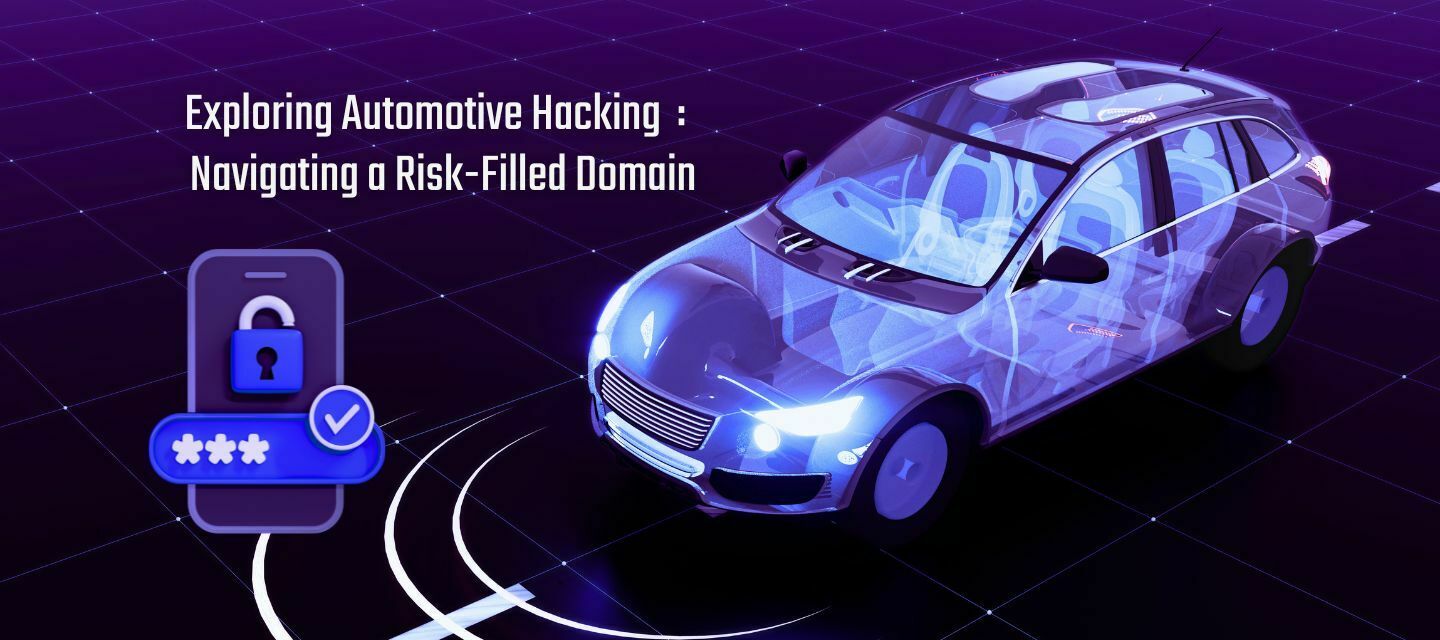In the age of interconnected vehicles and smart technologies, our cars have become more than mere modes of transportation. They are now rolling computers, brimming with sensors, software, and intricate networks that offer us convenience and connectivity on the go. However, as we immerse ourselves in the world of smart cars, we must also confront an alarming concern: automotive hacking and the multitude of cybersecurity threats that accompany it.
What Is Automotive Hacking?
Imagine your car, a target for digital intruders, its systems manipulated remotely, and its passengers at risk. Now, welcome to the world of automotive hacking.
Automotive hacking refers to the act of exploiting vulnerabilities in a vehicle's software, electronics, or communication systems to gain unauthorized access, manipulate, or control various aspects of the vehicle. This can encompass a range of attacks, from relatively benign pranks, such as changing the radio station, to far more sinister actions like taking control of the vehicle's steering, braking, or acceleration.
Some examples of automotive hacking are:
- In 2016, a Chinese security team remotely hacked a Tesla Model S, gaining control over its brakes, door locks, and other systems, highlighting the need for better security in autonomous and connected vehicles.
- In 2015, researchers demonstrated that they could remotely take control of a Jeep Cherokee, accessing its critical systems through a vulnerability in the infotainment system. This led to a recall of 1.4 million vehicles.
Cyber Security concerns related to Automotive Hacking:
- Remote Control Vulnerabilities: Modern vehicles are equipped with telematics systems that enable remote communication for convenience and diagnostics. While this offers great benefits, it also opens the door to potential abuse. Hackers could potentially compromise these systems and gain control over a car's functions.
- Data Privacy: The data collected by connected vehicles can be a goldmine for hackers. Personal information, driving habits, and even your physical location can be exposed, raising serious privacy concerns.
- Over-the-Air Updates: Many car manufacturers are now using over-the-air (OTA) updates to remotely fix software bugs and improve vehicle performance. However, this also introduces the risk of malicious actors delivering fake updates to infiltrate vehicle systems.
- Infotainment Systems: The infotainment system is a common target for hackers. Gaining control over this system can give them access to other critical vehicle systems, like the engine control unit (ECU), transmission control unit (TCU), and even the braking system, creating a cascade of security risks.
- Autonomous Vehicles: As self-driving cars become more prevalent, the potential for hacking becomes even more significant. A compromised autonomous vehicle could lead to catastrophic accidents. Hackers gaining control over an autonomous car's navigation or sensor systems could steer it off course, causing collisions or harm to passengers and pedestrians. Furthermore, a hacker could manipulate the vehicle's perception of its surroundings, leading to incorrect decisions, such as ignoring obstacles, running red lights, or endangering the occupants and those on the road.
Automotive Threat Modeling:
- Threat modeling in the context of automotive security analysis is a systematic approach to identifying and addressing cybersecurity risks at various phases of the development lifecycle. It involves modeling the system architecture, trust assumptions, and potential adversaries' motivations, capabilities, tactics, techniques, and procedures (TTP).
- In the concept phase, threat modeling is based on high-level system design and focuses on defining high-level security requirements and security concepts.
- During the product development phase, threat modeling incorporates detailed system design specifications and implementation details. Which aims to discover design vulnerabilities, define technical security requirements, and ensure that security considerations are integrated into unit and integration testing.
- In the production and operation phase, threat modeling prepares for system penetration testing by identifying high-risk inputs and creating checklists for auditing, prioritizing entry points to maximize the effectiveness of penetration testing.
- Key components of threat modeling include:
- Drawing system architecture using Data-flow Diagrams (DFD). A DFD can assist in understanding and mitigating automotive hacking by visually representing the flow of data within a vehicle's systems. Identifying potential points of vulnerability and tracking data paths helps in designing robust security measures, enhancing resilience against cyber threats in the automotive industry.
- Identifying threats using methodologies such as STRIDE (Spoofing, Tampering, Repudiation, Information disclosure, Denial of Service, and Elevation of privilege). STRIDE is a threat modeling framework that helps identify and address security risks by systematically analyzing potential threats, enabling proactive measures to prevent cyber-attacks and enhance the overall security posture of automotive systems.
- Addressing threats with redesign or mitigation strategies, and validating threat models against actual systems.
- The establishment and maintenance of a knowledge base that catalogs threats and mitigations applicable to different system contexts can enhance efficiency and reduce human errors.
- Practical implementation of threat modeling for automotive security can be facilitated using tools like the Threat Modeling Tool (TMT), which allows customization of templates, stencils for drawing DFD diagrams, and threat types that define threat and mitigation catalogs.
- Threat modeling is flexible and can be adapted to specific automotive components, making it a valuable method for mitigating cybersecurity risks in the automotive industry.
The world of automotive hacking and cybersecurity is a battlefield where the stakes are high, and the enemy remains hidden behind lines of code. As our vehicles become increasingly connected and autonomous, the importance of securing them from digital threats cannot be overstated. Threat modeling is an effective technique to identify threats and mitigations during the security analysis of automotive systems. The automotive industry, in collaboration with cybersecurity experts, must continue to invest in research, development, and education to ensure our cars remain safe and secure on the road.


